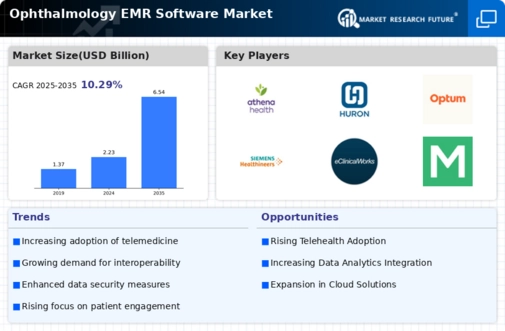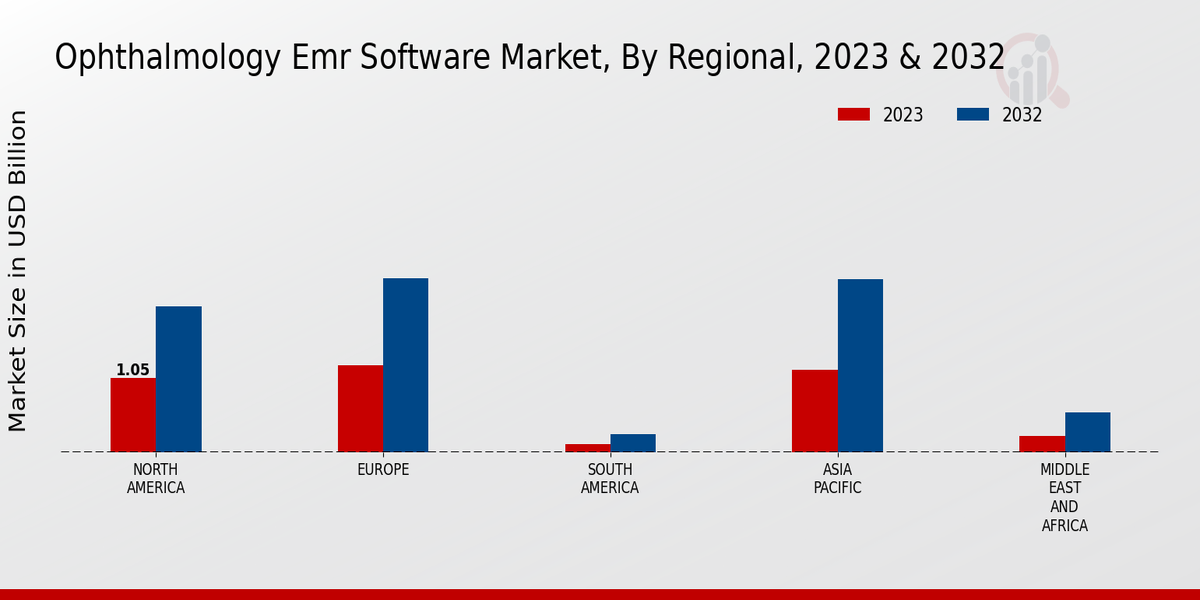Ophthalmology EMR Software Market Summary
The Global Ophthalmology EMR Software Market is projected to grow from 2.23 USD Billion in 2024 to 6.54 USD Billion by 2035.
Key Market Trends & Highlights
Ophthalmology EMR Software Key Trends and Highlights
- The market is expected to experience a compound annual growth rate (CAGR) of 10.28% from 2025 to 2035.
- By 2035, the market valuation is anticipated to reach 6.54 USD Billion, indicating robust growth potential.
- in 2024, the market is valued at 2.23 USD Billion, laying a strong foundation for future expansion.
- Growing adoption of electronic medical records due to increasing demand for efficient patient management is a major market driver.
Market Size & Forecast
| 2024 Market Size | 2.23 (USD Billion) |
| 2035 Market Size | 6.54 (USD Billion) |
| CAGR (2025-2035) | 10.29% |
Major Players
athenahealth, Inc., Allscripts Healthcare, LLC, Cigna Corporation, Huron Consulting Group Inc., Philips Healthcare, GE Healthcare, NextGen Healthcare Information Systems, LLC, Optum360, Cerner Corporation, Siemens Healthineers, eClinicalWorks, Epic Systems Corporation, MEDITECH, McKesson Corporation, UnitedHealth Group Incorporated

















